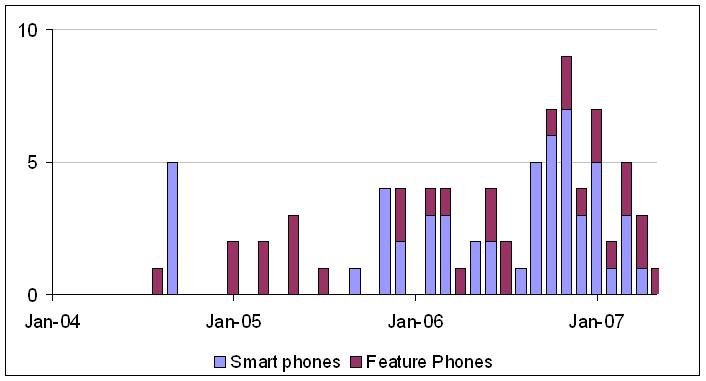Parvesh Sethi is Cisco’s Vice President, Advanced Services. In his keynote at the Communications Developer Conference this week in Santa Clara, he described an interesting use case for future wireless devices:
Your phone automatically notifies the hotel when you arrive – no need to stand in line to check in. Your assigned room number appears on your phone screen. The phone acts as a wireless key for your room. In your room the hotel puts targeted ads onto your phone’s screen.
The bulk of his talk consisted of advice for developers. The two main themes were “leverage the power of the network” and “exploit the long tail.”
The power of the network bit is to be expected from Cisco. The long tail part was a theme at many of the other presentations in the conference. For those who haven’t read the book, the idea is that the enormous reach of the web at relatively minuscule cost allows products that in the past would have been too narrow in appeal now to be commercially viable, and when combined with enough other low-volume products, to be lucrative. For example, a book that sells two copies a month isn’t worth carrying in a retail bookshop. But an online bookstore with a hundred thousand such titles would glean annual revenues in the tens of millions of dollars.
Sethi explained that custom programming for a particular enterprise used to be prohibitively expensive. But now the Web is packed with useful components that you can invoke through simple APIs. Web development environments automatically take care of the hard stuff for you, stuff like security, transcoding, QoS, authentication. Application acceleration is available right in the network. The open application development environment makes it possible for people to add their own value. This unleashes the long tail effect for the component vendors.
The example Sethi gave for this type of application was a real-world one, from an individual Subway franchisee – not Subway Corporate. The application runs on a Cisco phone. When an employee arrives in the morning, he logs in on the phone. This means no need for a time clock. Suppose four employees are scheduled to work a shift, but only three clock in. Previously one would have to start calling to find a substitute, leaving only two to perform the work. Now the phone system starts outdialing automatically, calling down the list of substitutes until one responds with a touchtone. Meanwhile, back in the store, the phone reminds the employees about essential process steps, like putting the bread in the oven. If the employee doesn’t acknowledge that he has done it, the system calls the supervisor to snitch. Sethi claimed that this application yielded a 30% increase in lunchtime revenue in its first month of operation.
Openness of the development environment, the ability for users to modify Cisco’s system and incorporate it into applications built on a whole set of such open components was one of four “Pillars of UC development” that Sethi identified. The other three were security, simplicity and virtuality (access to the application via any device, any where).

